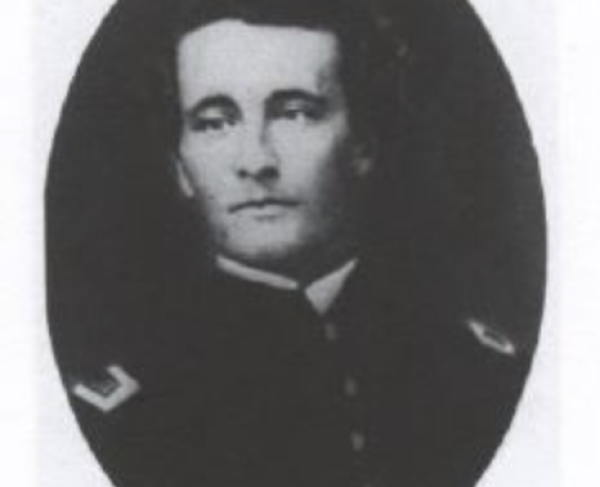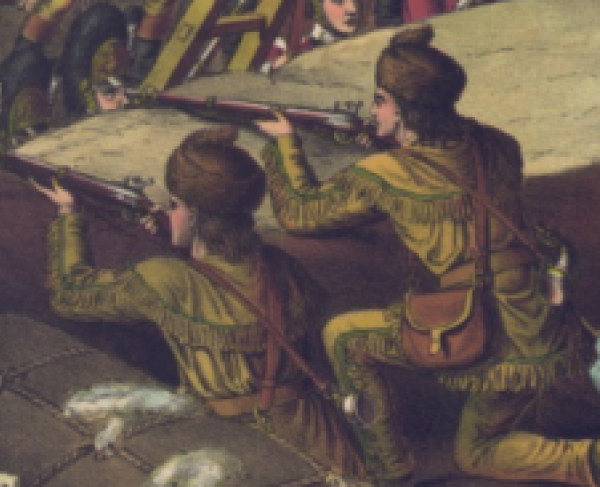Alexander Hays

Alexander Hays was born in Franklin, Pennsylvania, the son of a respected congressman and militia officer Samuel Hays. He first entered Allegheny College but soon transferred to the United States Military Academy as part of the Class of 1844. While at West Point, Hays befriended a young Ulysses S. Grant, who was in the preceding class of cadets. He also garnered the nickname “Sandy.” Though he graduated 20th out of a class of 25, Hays served with distinction in the Mexican-American War. He was brevetted twice for gallantry but resigned his commission to pursue civilian life. After marrying Anna McFadden in 1846, Hays tried his hand at several industries, working as an iron manufacturer and then as a railroad engineer. He worked as a civil engineer in Pittsburgh when the war broke out in 1861.
Immediately after the Confederates fired on Fort Sumter, Hays volunteered his services to the war effort and reentered the army. That summer, he helped to raise the 63rd Pennsylvania Infantry and served as its colonel. At the Battle of Seven Pines in 1862, Hays’s courage earned him a promotion to brigadier general. He went on to serve at the Battle of Second Manassas, where he was wounded in the leg, causing him to miss the subsequent Maryland and Fredericksburg Campaigns.
As a result of his injury, he was assigned to the defenses of Washington, but this did not suit the hard fighting and hard drinking Hays. In early 1863, he received command of a brigade known as the “Harpers Ferry Cowards." The unit had been captured by Maj. Gen. Thomas “Stonewall” Jackson’s men the year before at Harpers Ferry during the 1862 Antietam Campaign. After whipping them into shape, Hays and his brigade joined the Union Army of the Potomac on the march to Gettysburg. Before the battle, Hays assumed command of the division due to the reassignment of Maj. Gen. William French.
At Gettysburg, Hays’s division was deployed on Cemetery Ridge and helped to repulse the Confederate attacks on both July 2 and 3, while also doing battle at the Bliss Farm between the lines. During the Confederate artillery bombardment and infantry assault of July 3rd, Hays walked calmly among his men, encouraging them to stand firm. After his division helped to repulse the attack, which became known as Pickett’s Charge, Hays’s men remembered him riding out in front of the Union line dragging a captured Confederate battle flag behind him to the cheering of his troops.
In the spring of 1864, the Army of the Potomac was reorganized, and “Sandy” Hays found himself relegated back to brigade command. However, this time he was marching into battle under the command of his old friend Ulysses S. Grant who began an aggressive campaign to pursue and defeat General Robert E. Lee. On May 5, 1864, the armies met once again in a place called The Wilderness, near the old Chancellorsville battlefield in central Virginia. As the Federals clung desperately to the key intersection of the Orange Plank Road and Brock Road, reinforcements from Maj. Gen. Winfield S. Hancock’s II Corps arrived, including Hays and his brigade. The hard-fighting Pennsylvanian moved his men into line on the Union right and began to engage the Confederates. Visibility in the Wilderness was poor as the two lines slugged almost blindly away at one another. Hays led the advance from the front, pressing the attack. When he reached his old regiment, the 63rd Pennsylvania, he stopped to encourage them when a bullet struck him, and fell from his horse. Members of the 63rd rushed to his aid and carried him to the rear, where he died about three hours later.
Hays was buried in Allegheny Cemetery near his home in Pittsburgh. Grant was deeply saddened when he heard of the death of his friend. Newspapers reported Grant solemnly weeping as he visited his friend’s gravesite years later during a campaign stop in Pittsburgh.
Further Reading:
Life and Letters of Alexander Hays By: George Thornton Fleming
Related Battles
17,000
13,000


